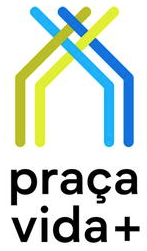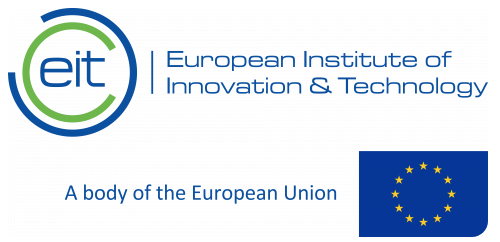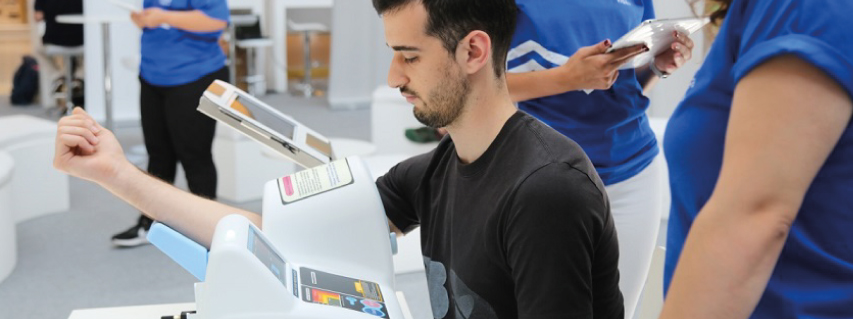HeaLIQs
Healthy Lifestyle Innovation Quarters for Cities and Citizens
Challenge
HeaLIQs promotes activities that stimulate the interaction between citizens, local academia, SMEs and government. They meet in the Healthy Living Room; an openly accessible forum where citizens engage in lifestyle assessments, test innovative products from SMEs and engage in community programs; all focusing on learning about a healthy lifestyle in an approachable setting. In 2019 the ‘Room’ will become mobile (bus), aiming to visit health illiterate citizens in neighborhoods and rural areas.
Solution
Building on the 2018 concept, experiences and developed tools, HeaLIQs decentralized its activities in 2019: we piloted the Healthy Living Room as a mobile community service, targeting typically health illiterate neighborhoods and rural areas. We created health awareness while being at the heart of the community.
Besides individual focused lifestyle assessment and advice, the activity had a stronger focus on promoting a healthy environment to support healthy habits. Different workshops between community - and health geography scientists and local governments helped shaping a Community Intervention toolkit that we aim to pilot and co-develop with citizens during the neighborhood visits. Here we brung in the expertise of Univ. and Municipality of Copenhagen, the Univ. and Municipality of Groningen and Univ. of Coimbra. Modular outreach materials were produced tailorable to different publics or social contexts.
Objectives, Activities and Results expected / achieved
The expected and measured outcomes of HeaLIQs can be divided into:
1. how we expect the activity to promote regional outreach towards specific citizens;
2. how the individual visitors experienced both the individual and community parts of the activity.
We expect that a low-profile, public event where families rather than individuals gather makes people more susceptible to engage in activities that promote health literacy. In the targeted communities we expect to reach people usually overseen in prevention programmes.
This outcome can be measured by post-activity analytics on data obtained in the HLR:
general (education, age) and lifestyle-related parameters part of the HLAT - Healthy Lifestyle Assessment Toolkit- allow stratification of the visitors. Thereafter, we will perform (literature) research on how this differed from other regional/national prevention programmes. Like for example voluntary prevention programmes at a general practitioner. This will allow us to assess whether we reached our target population. A great outcome of the activity would be if we reached those citizens that are being missed in other prevention programmes and those who would benefit the most from adhering to a healthy lifestyle. We expect that after a visit to the HLR the citizen has increased his/her knowledge on both personal health (based on report and advice following the HLAT) as well as community health (importance of the environment in healthy living) and how he or she can take control/influence health via these two dimensions. This can be measured via the design of the HLAT, via which we will be able to ask for a (very) short recap on how the citizen experienced the activity (individual & community part).
Objectives Achieved:
• Program Attractiveness and Demand - 53,3 for Portugal ; 59,6 for The Netherlands;
• Citizen Outreach (e.g. MOOCs, Festivals) - 965;
• Citizen engagement - 250.

Project Reference
19142Funding

Intervention Region
EuropeTotal Investment
495.000,00IPN Investment
67.500,00Total Eligible
495.000,00IPN Eligible
67.500,00EC Funding – Total
495.000,00EC Funding – IPN
67.500,00Duration
12 MonthsStart Date
2019-01-01End Date
2019-12-31Approval Date
2019-03-11Consortium
Instituto Pedro NunesServicio Andaluz de Salud
Academisch Ziekenhuis Groningen
City of Copenhagen
University of Copenhagen
Rijksuniversiteit Groningen
Universidade de Coimbra
Keywords
LifeStyle Assessment;Healthy Living;
Innovation Quarter.










